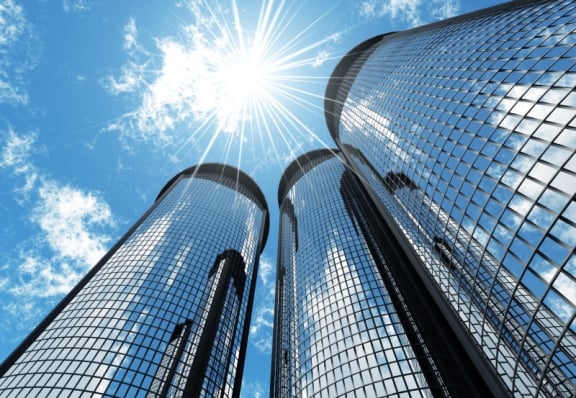The growing emphasis on environmental sustainability is creating both challenges and opportunities for real estate investors, according to a panel discussion today at the National Association of Real Estate Investment Trusts' annual convention in Dallas.
As consumers and regulators place increasing pressure on businesses to reduce their carbon footprint, real estate property owners are finding themselves paying more attention to factors such as lighting efficiency, solar-panel installation and even adding bike racks to encourage employees to leave the car at home.
“It matters if you think about attracting investment, and what consumers want, and what investors want, and what government wants,” said Prologis Inc. chief executive Walt Rachowich, a speaker on a panel. “There are a heck of a lot more pluses than minuses from a cost perspective,” he added.
From a real-estate-investing perspective, the industry is struggling with and adjusting to a general trend toward more-environmentally-friendly buildings.
Real estate investment trusts, which manage portfolios of properties to lease, increasingly are being confronted with the challenges of bringing buildings up to these higher environmental standards.
As the largest group of property owners in the country, the REIT industry is constantly confronted by sustainability issues, which are now being measured and evaluated by a growing list of government and private enterprises.
“We have some serious [environmental] challenges in front of us, and there's no way we can do this without this group” of real estate property owners, said Gary Pivo, professor of urban planning and natural resources at the University of Arizona.
RELATED ITEM The largest nontraded REITs »
As the REIT industry wrestles with how to best navigate and capitalize on the trend toward environmentally friendly buildings, forces in the marketplace are being developed to start measuring and evaluating carbon footprints at the building and REIT portfolio levels.
“Lack of disclosure means we're not evaluating the risks,” said Kevin Kampschroer, federal director of the office of federal high-performance green buildings with the U.S. General Services Administration. “People are choosing to work for firms that care about these issues,” he added.
While there are sometimes considerable costs associated with improving a building's rating in terms of sustainability, Mr. Pivo said it doesn't always chew into the profits of the property owner, largely due to the fact that higher-rated buildings can usually charge higher rents.
“The total return on an investment in the building is often neutral,” he said. “You're not making a killing by owning these buildings, but you're not losing money, either.”
Many of the changes aimed at raising a property's environmental rating can come in the form of simple management decisions, said Mary Hogan-Preusse, managing director and co-head of Americas real estate for APG Asset Management U.S. Inc.
“There are examples of buildings being fully heated at 6 a.m., when people don't even arrive until 9 a.m.,” she said. “REIT investors should take a look at this issue [of sustainability], because it's going to really impact the way we all invest.”







